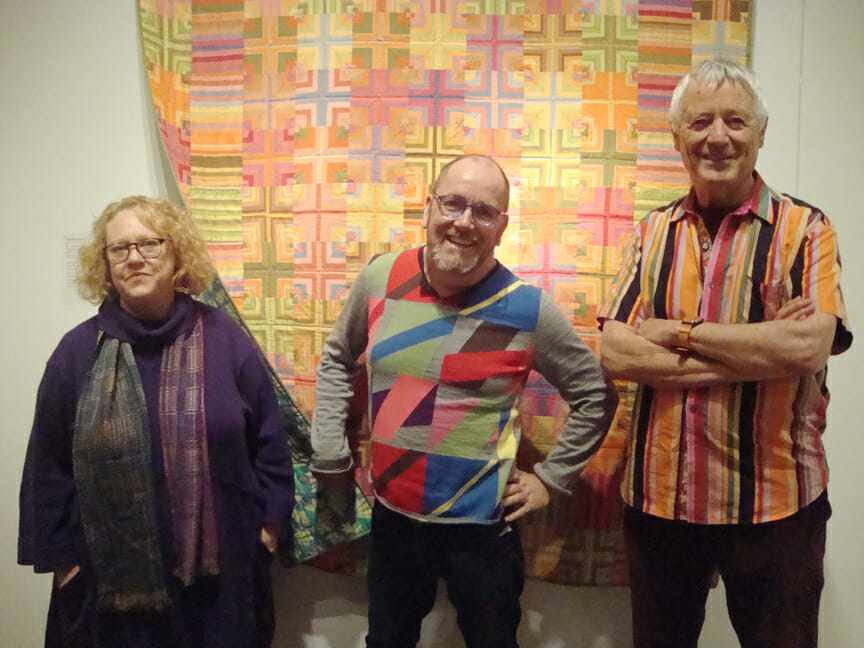
Strengthening the creative muscle with Kaffe Fassett

Kaffe Fassett is one of the most prolific quilters of our generation, one of the fabric and pattern designers credited with helping to popularize the generations-old tradition and modernize it with his bold use of color and pattern.
But Fassett is not an artist working in a vacuum. His accomplishments are shared with his long-time partner and studio manager of 26 years Brandon Mably, and Liza Lucy, the woman responsible for dragging Fassett into the world of patchwork in the 90s. Fassett called the trio the Three Musketeers in an interview to promote his exhibition, Blanket Statements: New Quilts by Kaffe Fassett and Historical Quilts form the Collection of the Quilt Museum and Gallery, York, UK, at the James A. Michener Art Museum in Doylsetown, Pennsylvania.
“We pretty much collaborate on the whole thing,” Mably said. “We share the studio and it is like playing tennis. We are passing ideas off one another all the time. I think you will say it strengthens the muscle.”
The quilting collaboration began 20 years ago when Lucy convinced Fassett to give patchwork design a try. Already a successful knitwear designer, Fassett often pulled inspiration from antique quilts for the geometric colorwork in his designs. He also was intrigued by the look of porcelain on textiles and used antique quilts as the backdrop for his paintings.
So Lucy and Fassett spent 10 days in her Pennsylvania home, cutting fabric, auditioning prints, sewing them together and arranging quilts until they had enough material for a book. Then disaster nearly struck.
“We laid fabric out on the floor, looked at it, and took a picture,” Lucy said. “Then I would make notes and store it in a bag, take out the next quilt and lay it on the floor, take a picture, bag. Then I put him on the plane to London and the next day my 2-year-old showed me the ribbon she found in my camera. It turned out to be a good thing because I didn’t fess up. I did as much as I could from memory and I guess I did pretty well because we’re on hardcover book six and softcover book 20, and the 2-year-old is now 22.”
In those early days before email and digital photography made instant communication across the Atlantic possible, the team did most of their communicating by fax. Today the trio has an almost daily Skype call to go over the 60 patterns Kaffe designs annually for books and magazines. But some processes are still very low-tech.
“Nothing is ever worked out on a computer beforehand,” said Mably. “It is literally building blocks. We start with a structure, the fabrics you are going to work with and are responding to those. We build the story as we go along.”
The week the trio was in Pennsylvania for the opening of Blanket Statements at the Michener, they were also working on a pattern for a French quilting magazine. There isn’t really a typical work session, but for this pattern Fassett got to work taking out fabrics, pinning them to a design wall and sketching out some ideas. From there he collaborated with Lucy on his vision for the quilt.
“I pushed back and said, ‘No I need space here,’ and he said, ‘OK I’ll give you space here,’ and now I’ll try and sew some of it up and we’ll see how it looks. Then this weekend it may go the way he thinks it is going to or it may go off the rails. We’ll find out.”
Another aspect of the creation process that has changed is Lucy does now allow Fassett to use a rotary cutter. Fassett wrote in his autobiography, “Kaffe Fassett: Dreaming in Color”, that when they first started quilting together, Lucy didn’t trust him to be accurate enough for the finished block to come together right. Over the 20 years of working together he has been given rotary cutter privileges, but she does prefer to do the cutting herself for one reason.
“He’s terribly, terribly frugal and I get these pieces with the selvage still on them because he can’t waste anything,” Lucy said. “I get lots of people who take me aside and say, ‘We know you do all the work.’ That is simply not true. He does have a sewing machine. He loves to sew. Given the opportunity he does a lot of hand piecing, he does a lot of designing with a needle in his hand and he is very fast. Most wonderful of all he loves to sew down binding.”
Currently Fassett is working on a book due out at the end of 2016 called “Kaffe Fassett: Bold Blooms,” focusing on the floral side of the decorative arts. It is a book he has been wanting to create for some time and has been working on for the last three years.
“We’ve kind of narrowed it down as far as instruction goes to patchwork and needlepoint,” Fassett said. “Needlepoint cushions are at the end of every chapter and there are several quilts in each chapter.”
Each chapter features a different color mood starting with neutrals, then moving to bright pastels, smoldering darker colors and finally very dark colors and contrast.
With more than 40 books to his name on quilting, knitting, decorative arts and needlepoint, Fassett is now a famous, successful artist in the fiber world. But it wasn’t always that way. Long before his first successes in designing knitwear, he was a struggling artist, sometimes down to his last dollar before a critical commission or sale would come in to sustain him. He credits that drive to follow his passion to watching his parents follow their own dream of opening a restaurant in Big Sur, California, and being surrounded by restaurant patrons which were a group of artists, actors and writers making a living doing the creative work that moved them.
“My parents built a restaurant in the middle of rattlesnake country. There was no electricity, there was a two-lane road that went down a perilous coast and they bought this piece of property and built this incredibly modern, world-class restaurant,” Fassett said. “Nobody might have come. It was a huge risk and I watched people from all over the world sit up and take notice. … They made a huge success out of backing their hunches and taking a risk. So that was a huge thing to watch and then of course the crowds of people were dreamers. They were musicians and writers and thinkers and theater people that were using their instinct to create a melody or drama.”
Fassett is credited as one of the quilters who helped bring back quilting as a popular pastime in the United States. That wasn’t necessarily a his goal when he and Lucy began work on their first book, but rather a result of following his own instincts when it comes to color, fabric and pattern.
“I think it is a byproduct,” Fassett said. “I was just wanting to celebrate all the passionate research I had done in old fabrics and old quilts and old decorative arts. Looking at the way furniture was painted in Scandinavia and the way great silk rugs were made in China, all of that. All the things I’ve looked at all my life in museums, I had a chance to express my love of those things through patchwork quilts and the fabrics that I have been able to design to go in them.”
Blanket Statements: New Quilts by Kaffe Fassett and Historical Quilts from the Collection of the Quilt Museum and Gallery in York, UK, will be on display at the James A. Michener Art Museum through February 21, 2016. Additional workshops with Liza Lucy and Patricia Herr will be held throughout the exhibit. Fassett will also present an artist lecture and book signing on Thursday, November 19, at the museum. Click here for more information about the educational programs. Click here to read more about the exhibit.
The exhibit is being displayed in conjunction with Pattern Pieces, an exhibit featuring quilted objects that are not made of fiber. Click here to read a related article about Pattern Pieces.
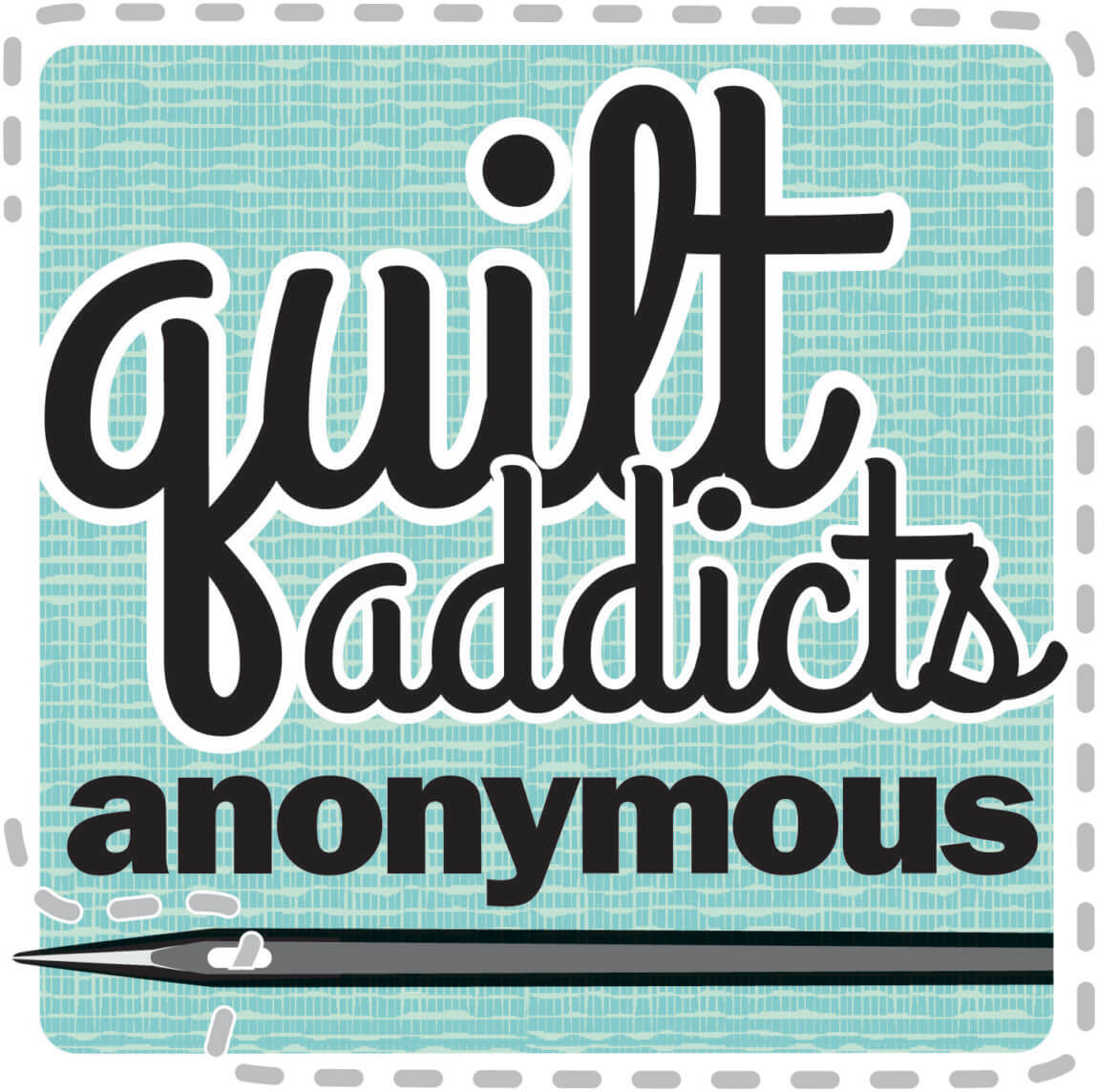
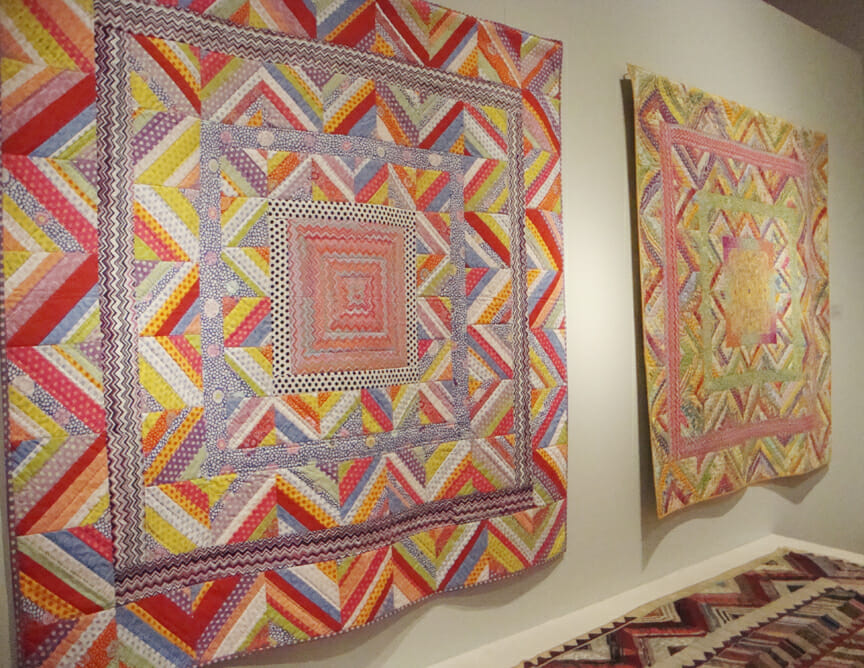

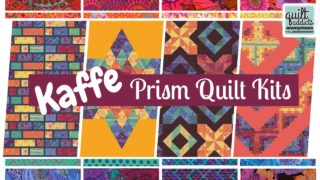
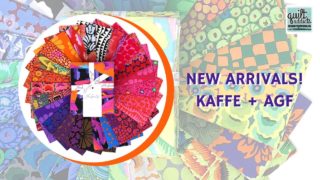
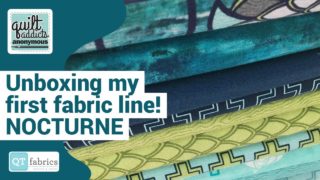
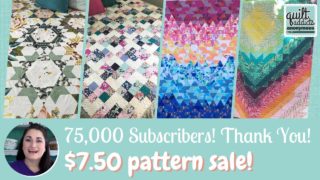
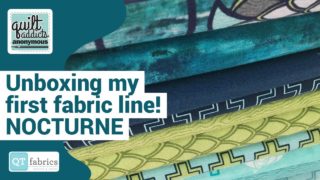
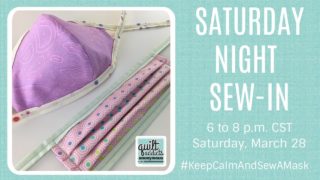
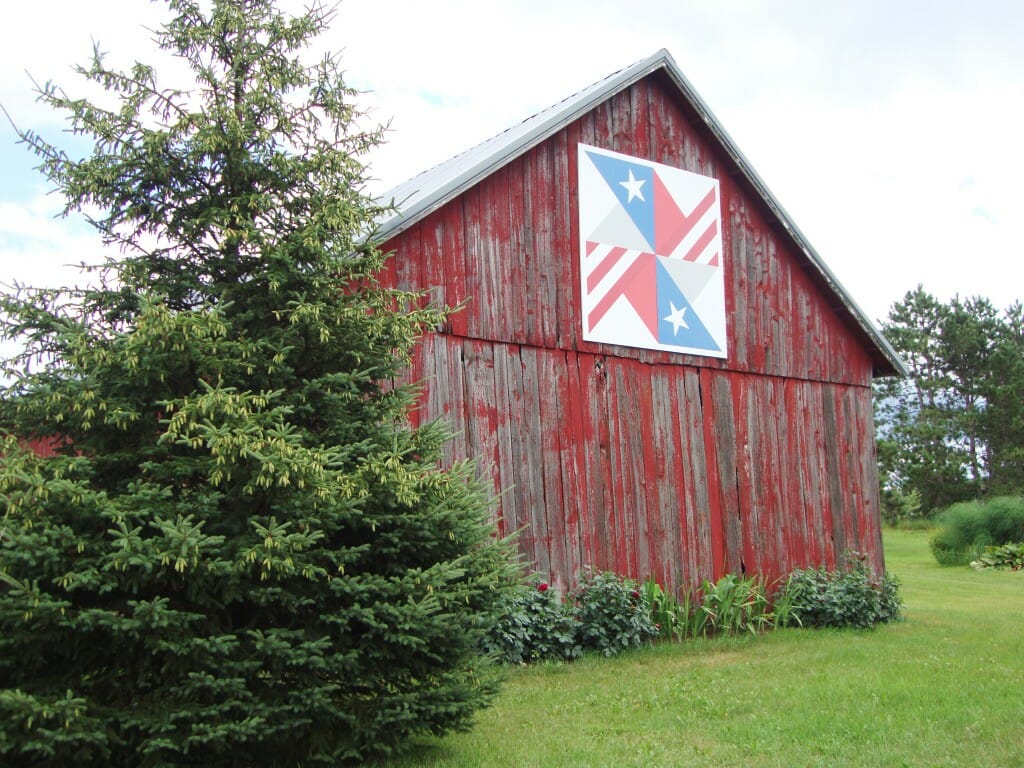
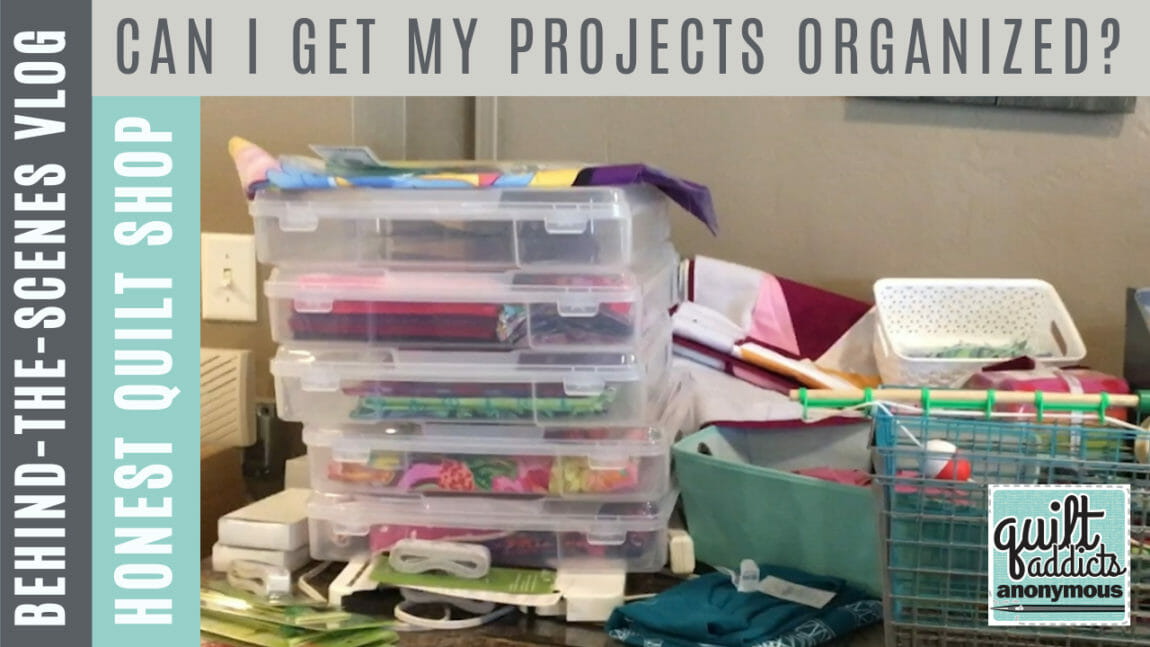
I would be honored to own some of these marvelous fabrics!
Just beautiful fabric….
I enjoyed the interview! He is my all-time favorite!!! I LOVE all of his fabric collections, all of them. I am currently working on a quilt made with his fabrics exclusively. Thanks for the chance to win!
I’ve been Fassettnated since the 80’s…his use of color speaks to me. No, it shouts!
I don’t have any of Kaffe’s books, but I have been a long term admirer. I would love to have this book. I have started to collect some of his fabrics so I can make one of his amazing quilts.
I LOVE all of Fassett’s fabrics! They are my favorite; the use of color is amazing. I would love to have this book!
I too would be very grateful to have one of his books. Maybe then I could inspire my husband to become more involved with my quilt making projects! He goes with me to the shops and gives me his opinions on fabric and colors so that is a start.
Thank you for the chance to win one.
I think his fabrics are beautiful. I am using some of it in a quilt for my granddaughter. It really livens it up.
What a interesting interview……. thank you for this giveaway..
I love Kaffe Fassett’s use of color and pattern! I have lots of his fabrics but none of his books – would love to have one!!!